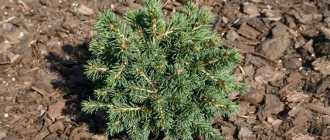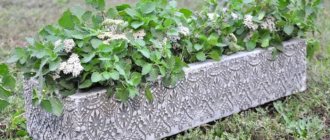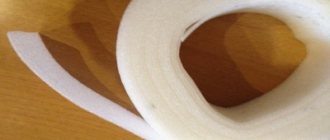Author: Olena N. https://floristics.info/ru/index.php?option=com_contact&view=contact&id=21 Published at Gorodny Roslin Published: 29 Spring 2015 Revised: 26 September 2021 Remaining edits: 26 September 2021
Zmist
- Koli sadhati chasnik before winter Planting lines for the chasnik in spring 2021
- Landing for the chasnik at the spring of
- Koli sajati chasnik in zhovtni 2021 fate
- Clock planting terms for winter leaf fall 2021
- Planting an hour for babies 2021 before winter
- If a watchmaker is better than sadjati
- After any culture, plant a chasnik
- Planting a chapel before winter in the Moscow region
Chasnik (lat. Allium sativum) is a rich herbaceous plant, a species of the genus Tsibulya from the homeland of Amarylisova pidrodina Tsibulevi. This vegetable culture has been popular among rich peoples of the world for six thousand years - a source of demand both in cooking and in medicine. The real ones are not only the plant stem, but also the leaves, shoots and flower stalks of young plants. The Fatherland grew up in Central Asia, and the chasnik was introduced into culture in the Georgian regions of Afghanistan, Iran, Pakistan, Uzbekistan, Turkmenistan and Tajikistan. For many years it was believed that the chasnik resembled a long-pointed tsibula, widened in the Girsky gorges of Turkmenistan and the Tien Shan, and further research confirmed this hypothesis - the chasnik is not genetically related It depends on what type of cybula it is, so with high probability it can be confirmed that the timekeeper is a variety tsybuli. Grow it both in the spring and in the winter way. This article will tell you how to properly plant winter varieties.
Koli sajati chasnik before winter
Planting lines for the spring 2021 rock clock
Koli sajati winter hour? The winter season begins to grow in the fall. The first crop needs to be taken from the plot where you plan to sow the winter season, no later than the end of the lime tree. Planting of the plant on the ground begins 35-45 days before frost. Before winter sets in and the ground freezes, the plant grows to expand the root system of the plant by 10-12 cm, and the green foliage will no longer appear. The optimal landing time for the watchmaker is from 20 pm to the middle of the summer. However, if you wanted to grow the chasnik from the bulbs, and not from the teeth, then you can sit them in the kettle.
When you plant a cibul before winter
Landing for the chasnik at the spring of 2021
| Mon | VT | SR | Thu | PT | SB | ND |
| 1 | 2 | 3 | 4 | 5 | ||
| 6 | NL | 8 | 9 | 10 | 11 | 12 |
| 13 | 14 | 15 | 16 | 17 | 18 | 19 |
| 20 | PL | 22 | 23 | 24 | 25 | 26 |
| 27 | 28 | 29 | 30 |
Koli sajati chasnik in zhovtni 2021 fate
| Mon | VT | SR | Thu | PT | SB | ND |
| 1 | 2 | 3 | ||||
| 4 | 5 | NL | 7 | 8 | 9 | 10 |
| 11 | 12 | 13 | 14 | 15 | 16 | 17 |
| 18 | 19 | PL | 21 | 22 | 23 | 24 |
| 25 | 26 | 27 | 28 | 29 | 30 | 31 |
Clock planting terms for winter leaf fall 2021
| Mon | VT | SR | Thu | PT | SB | ND |
| 1 | 2 | 3 | 4 | NL | 6 | 7 |
| 8 | 9 | 10 | 11 | 12 | 13 | 14 |
| 15 | 16 | 17 | 18 | PL | 20 | 21 |
| 22 | 23 | 24 | 25 | 26 | 27 | 28 |
| 29 | 30 |
Planting an hour for babies 2021 before winter
| Mon | VT | SR | Thu | PT | SB | ND |
| 1 | 2 | 3 | NL | 5 | ||
| 6 | 7 | 8 | 9 | 10 | 11 | 12 |
| 13 | 14 | 15 | 16 | 17 | 18 | PL |
| 20 | 21 | 22 | 23 | 24 | 25 | 26 |
| 27 | 28 | 29 | 30 | 31 |
The color in the table indicates what day it is for sowing:
| Vidminny | Garnius | Normal |
| Pogany | Zhahliviy |
If a watchmaker is better than sadjati
If the plantings are too late, they will sprout, which cannot be allowed categorically, and if the plantings are too early, they will not take root and will freeze, so it is important to follow the correct guidelines for planting winter varieties.
- How to plan plantings in cities
Garlic bed care
After planting all the seeds, the bed should be covered with sawdust, dry peat or spruce branches. If autumn is dry, garlic should be watered once a week. In winter, the bed should be covered with snow, then you can expect a good harvest.
As soon as the spring sun warms up, you should do the following:
- the bed should be cleared of sawdust, branches and other debris;
- then loosen the row spacing to provide the plants with access to oxygen;
- water once every 5 days, limit watering in July to avoid rotting of the heads;
- carry out the feeding procedure in the second half of May using urea and crushed superphosphate;
- stop water supply 25 days before harvest.
Another important point. As soon as the garlic shoots out its arrows and forms inflorescences, they need to be torn off or cut off, otherwise all the growth force will go into these bulbs.
The degree of harvest readiness is determined as follows:
- the leaves of the plant have turned yellow and are beginning to wither;
- the film covering the seeds of the inflorescences is torn.
Garlic is harvested in late July - early August. After drying the heads, gardeners immediately select the largest segments for the next sowing.
Planting winter chapel
After any culture, plant a chasnik
First of all, to choose a plot for the winter plant, you need to know when the plant can be planted, so that what crops can be transferred to the plant, and after which wines there will be no growth. The fastest-growing hour after similar vegetables with a short growing season:
- ogirkiv,
- pepper,
- eggplant,
- watermelon,
- zucchini,
- grain crops,
- berry bushes.
It is not recommended to plant the planting plant on a plot where root crops grew - their crops should be harvested late, and it is unlikely that root crops will leave the soil. How can you sit the chasnik after the chasnik? Absolutely not. Same as after Cybula. The principle of fruition assumes that you can grow a clock on the spot, even in a flowing process, no earlier than three or four years later.
Watch before landing - preparation
In the fall of the hot bud, which reproduces only with teeth, the winter bud reproduces with both teeth and bulbs. In order to grow valuable cibulin from bulbs, you need two rocks, and from cloves you can remove large cibulin for the next crop after planting.
Before planting the spring plant, the seed material is sorted out, damaged teeth, damaged and ailing teeth, as well as those in which the membrane is damaged, then the acidic teeth are disinfected for 2 years using 400 g of ash. and two liters of water, which boils for a whole day and then there will be cooling. Instead of ash meadow for uninfected teeth, you can use a double sample of seeding material in salt solution (3 tablespoons per 5 liters of water) with further disinfection using a stretch of copper sulfate. sou (1 teaspoon per 10 liters of water).
Recommendations from the pros: sowing carrots before winter. Give birth much earlier!
Soil for a watchmaker
De sajati chasnik? The timekeeper is light-loving, therefore, grow under the sun in the soupy, non-acidic soil, digested for the previous crop - fresh rot in the soil for the timekeeper is brought to the point where it is more often affected by illnesses and diseases.
- Varieties of orchards for greenhouses
If it is necessary to add good soil to the soil after the previous crop, do so no later than a repeat or two before planting: dig up the soil with a shovel, adding 5-6 kg of humus per square meter, as well as 30 g superphosphate i 20 g of potassium salt, then pour a dose of copper sulfate (1 teaspoon per 10 liters of water). Before planting, cover the bed with spit.
How to plant a chapel before winter
In preparation for planting the plot, make furrows in the depths of 15-20 cm at a distance of 20-25 cm one at a time, pour coarse-grained sand into the bottom of the grooves with a 1.5-3 cm ball to prevent contact of the teeth with the soil and protect They look rotten. The distance between the large cloves is 12-15 cm, and between the small cloves – 8-10 cm. After laying the cloves in the soil, mulch the plot with a two-centimeter ball of dry peat or thyrsium mixed with soil.
If the winter is snowless, you will have to cover the sowing with roofing felt or polyethylene, unless it starts to snow, remove the melt so that the snow falls on the plot.
How to plant a spring tree - take note so as not to make jokes in the spring!
If you sow the bulbs in the seed container, hang them at a depth of no more than 3 cm at a distance of 2 cm, one at a time, with a distance between the grooves of 10 cm. If you sow the bulbs in the spring, kvitny, then until the fall the stink will be given by one-toothed cibulins, like It is necessary to dig it up, dry it and replant it in the soil, so that in the coming season the stink will produce a full supply of cibulin.
Watching the clock after planting in the spring
Landing and keeping an eye on the clock will not cause you any trouble. Winter garden is a culture with a high cold tolerance, and if only the trees have begun to grow the root system before winter, they will survive the winter well, especially if you mulch the plot and cover it with roofing felt. In the spring, remove the cover from the plots and clean off 2 cm of mulch to make it easier for the plants to get through the soil. Finally, the worm clock begins to remove the arrows, which must be removed before they reach a height of 10 cm, otherwise the cibulin will become too small as a result.
As soon as fresh greens appear, add nitrogen fertilizer to the soil - chaff, mullein or poultry afterbirth. When it’s ready to heal, add 200 g of ash to a cup of water and add it to the soil or linden. A chasnik is best served with organic goodness. Watering the plant in the phase of active growth should be done in the early stages, in the phase of ripening cibulin, switch to dead watering, and if the weather is rainy, then the need for additional fermentation falls, leaving excess water in the other half of the growing season. Iodine provokes illnesses and depletion of cibulin.
- Brussels sprouts: growing in the city, varieties
After watering, I’ll make sure the soil is cleared away, and the storms appear. As soon as you hatched, you mulched the plot, fighting the weeds, fluffing the soil and watering the clock you will have to do much less often.
It is necessary to harvest the chasnik in sleepy weather, when the lower leaves are heavily harvested - there will be, for example, a sticky residue, or on the ear of the sickle, two years earlier, the lower ripening chasnik. Dry the leaves of the winter herb in the sun for 4-5 days, clean the soil, trim the stems and shorten the stem to 10-20 cm.
Awakening dried cloves
It also happens that the gardener was late and did not have time to immerse the cloves in the ground on time. If the delay is insignificant, then it makes sense to use a method through which the cloves can be brought back to life. The procedure is as follows:
- Immerse the cloves in warm water and keep them in it for two or three hours;
- Take moss or sawdust and moisten it. Place the soaked cloves in them;
- Leave the cloves in a warm, dry room for several days. It is advisable if there is a battery nearby, which will speed up the drying process;
Warm temperatures and low humidity will speed up the germination of cloves
The cloves should be planted in soil disinfected with potassium permanganate.
In order for the harvested garlic crop to last longer, it is important not only to properly process the planting material, but also to select suitable conditions for subsequent storage. Below we talk about which storage options allow garlic to last as long as possible.
Garlic storage options
Peculiarities of planting winter grass
Planting a chapel before winter in the Moscow region
As a matter of fact, there is no great difference between the development of the winter season in Ukraine and in the Moscow region - everything will lie down until winter arrives. If winter begins with snowfall, then you probably won’t have the chance to cover the clock with spitting water, otherwise, in case of severe frosts, the winter will be snowless, and without covering the clock, it will be freezing. Above all, do not let the crops freeze in the ground, so focus on the amount of snow: a lot of snow - do not turn the clock on, a little - turn it on. In the spring, if you come and go, all your fears will be put behind you.
Planting a chapel before winter in the Urals
Ural city workers recommend not mulching winter plantings, but simply covering them with roofing felt or spitting material against frost. Mulch the plot better in the spring, when it hatches. In addition, since over time, the chapel becomes more granular and preserves thicker, the Urals recommend that the planting material be grown not from teeth, but from bulbs: in the first river, bulbs will produce one-toothed cibulins of medium size, then the next day the stench will become noticeably larger.
It is not recommended to fluff the soil in the Urals; when fluffed, the fragments are crushed by the top row of roots, and the growth may fail to remove any element of the food, become weaker and, possibly, cause illness. The spring plot is mulched, removing fluff is an unnecessary procedure and preserves the health of the growth.
Planting a chapel before winter in Siberia
In Western Siberia, the planting time for winter crops is very early - from the middle of spring to the first week of autumn. In addition, the plots with crops are covered with roofing felt until the snow falls. Otherwise, planting and monitoring the clock differs little from these processes in other areas.
Types of planting material
With proper planting and suitable soil, garlic successfully takes root and adapts to even the most severe frosts. Toward the beginning of March, the plant normally begins to produce green shoots. By summer, arrows appear at the planting site, which, as a rule, are removed if the gardener wants to improve the quality of the upcoming harvest. If you want to get planting material, you can leave the arrows from the largest bulbs.
The timing of harvesting depends on the type of planting material you choose.
As they grow, the arrows move from a spiral state to a straight one. At the moment when the arrows straighten completely, it makes sense to harvest the crop that will appear on the peduncle. To obtain a harvest, you need to follow the instructions step by step:
- Carefully remove the plants from the soil and tie them into bunches;
- Store the bunches in a dry, warm place for at least thirty days;
- A month later, carefully examine the plant and roughly divide it into two parts: bulbs and heads with bulbs. It is the bulblets that are the most valuable planting material.
Bulbs are smaller in size than cloves, but are capable of producing excellent yields
Important! In no case should you delay collecting the bulbs, because if they fall into the ground before you get to them, small garlic bushes will grow from them.
Planting different types of material
The timing of its immersion in the soil will depend on the planting material you prefer.
Table 1. Types of planting material
| View | Description |
cloves | Taken from mature bulbs. Ideal for autumn planting |
Bulbs | They are very fragile and do not tolerate frost well, so when planting them it is better not to take risks and plant them in April to guarantee a harvest. |
Single-pronged bulbs | They grow when bulbs are planted in the soil and are capable of producing a harvest when replanted. |
Single-toothed bulbs can also be used as seed
When choosing a specific planting material, you should focus on the time frame. So, from the cloves you will get a ripe bulb within a year after planting. In order for the bulbs to produce a bulb, they need to go through two stages, which respectively take two years.
Features of planting bulbs
Although bulbs require more favorable planting conditions, they are considered the most effective way to achieve garlic growth. The fact is that one winter bulb contains up to twelve cloves, while one arrow contains up to a hundred miniature bulbs, each of which is capable of bearing fruit.
There are many times more bulbs in one arrow of garlic than in one head of cloves.
Important! Before planting, it is recommended to keep the bulbs in the refrigerator or cold cellar for several days to increase their yield.
As the bulb matures, we get a single-toothed bulb, the miniature clove of which reaches a size of no more than three millimeters. If desired, single-clove onions can already be used for cooking. However, if you want to finish the job, you should replant the one clove in the soil in the autumn season, after which it will develop into full-fledged large heads of garlic.
Despite the fact that bulblets are planted in the off-season, spring is more suitable for them
Varieties of winter chasnik
In order to achieve success in the growing winter season, it is important to choose adaptations to suit your variety. There are varieties of the clock with arrows and such that the arrows do not close. Those varieties that give shoots are more vibrant and winter-hardy. We present to you the characteristics of several popular winter varieties, among which you can find the one that suits you.
- Lyubasha is a variety of Ukrainian selection with winter hardiness and dryness, miraculously preserved for up to 10 months without loss of berry. The height of the stem is 90-120 cm, the number of cloves is up to 7 pieces, the average weight of one clove is 15-10 g. The cibulina is white with dark purple veins.
- Ukrainian white - grows in both spring and winter crops. The variety does not shoot, but is miraculously preserved, the yield of cibulin is from 50 to 140 g, the number of cloves of cibulin is from 4 to 12 pcs.
- Spas is also a Ukrainian variety, bred by Lviv breeders, with high yield and keeping quality. The number of cloves is 7 to 9, the average weight of cibulin is 60 to 100 g. Resistant to nematodes and fusarium.
- Jubilee Gribovsky is one of the finest old varieties with a very welcoming taste, high yield, keeping quality and resistance to illness and disease. Cibulin weighs about 40 g and consists of 5-8 cloves.
- Yuviley 07 is a productive variety, resistant to fusarium, and is well preserved. Cibulina white-buzkova with streaks, consists of 5-8 cloves, tastes delicious.
- Reliable – a fruitful variety with a full-bodied relish, preserved in a warm place, white cibulin with bubbly streaks, consists of 6-7 cloves.
- Violet Kharkovsky is a productive variety that produces shoots and is resistant to illness. Cibulina is violet, rounded and flattened, weighing from 30 to 60 g, number of cloves up to 6 pieces.
- Messidor is a productive variety developed in Holland. Cibulina has up to 10 denticles.











